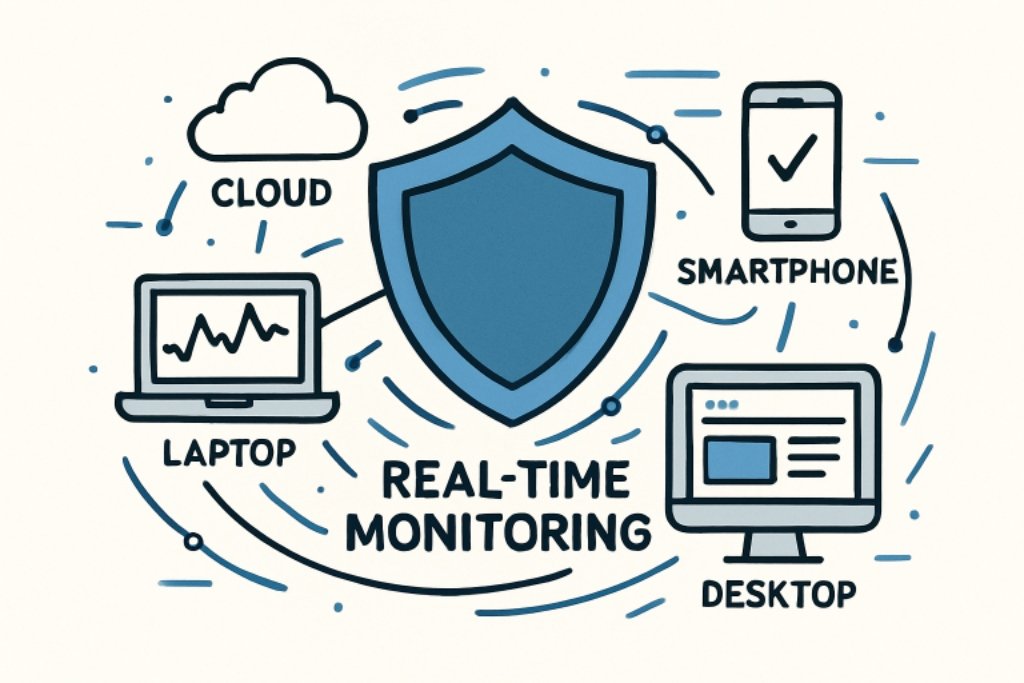The rising sophistication and scale of cyber threats demand a paradigm shift in how modern enterprises approach security. Adaptive security models provide businesses with a framework that evolves in real-time to counteract new and existing threats before they escalate into major incidents. As networks become more distributed and cloud-reliant, leveraging solutions such as SASE management has become central to maintaining resilient and secure enterprise environments. Adaptive security enables organizations to move away from static, perimeter-based methods, offering the agility and intelligence necessary to protect digital assets across diverse infrastructures.
Unlike conventional strategies that rely heavily on set policies and signature-based detection, adaptive security solutions draw on continuous monitoring, automation, and behavioral analytics. This means that these systems are always evolving, learning from both attempted attacks and successful breaches to inform future defenses. With the hybrid workforce era and cloud adoption accelerating, adaptive security systems ensure enterprises maintain control and visibility across all endpoints, especially when enhanced by robust SASE management frameworks.
Understanding Adaptive Security
Adaptive security is an advanced, risk-based cybersecurity approach that responds dynamically to known and unknown threats. At its core, it utilizes real-time data and analytics to detect, contain, and mitigate risk as it emerges. Unlike traditional defenses that can be bypassed or rendered obsolete by new attack tactics, adaptive security systems are designed to evolve, learning from each incident and strengthening future responses with AI-driven intelligence. This mirrors biological immune systems: after detecting and neutralizing pathogens, they become more resilient against recurring dangers.
By constantly analyzing network traffic, user behaviors, and endpoint health, adaptive security models provide organizations with deeper visibility into their entire threat surface. These systems are increasingly powered by AI and machine learning, which bolster their ability to identify patterns and anomalies that may signal an attack. As a result, adaptive security doesn’t just react to cyberattacks—it seeks to anticipate and prevent them, significantly reducing the likelihood of major breaches.
Importance in Modern Enterprise Networks
The digital transformation journey has led enterprises to operate across complex ecosystems comprising on-premises servers, remote workforces, multi-cloud environments, and myriad connected devices. This rapid expansion inevitably widens the attack surface, making businesses more vulnerable to both external and internal threats. As IT infrastructure becomes more fluid, security strategies anchored solely in firewalls or endpoint protection become insufficient.
Adaptive security solutions directly address this complexity. Their ability to scale and modify defense mechanisms in real-time ensures that enterprises stay protected regardless of where their data resides or how it’s accessed. Additionally, adaptive security aligns with modern compliance mandates, supporting more granular control over sensitive data and ensuring regulatory requirements are met even as network topologies change. As highlighted by industry experts at Gartner, fostering adaptability within your security posture is no longer a luxury but a requirement for safeguarding assets in the digital age.
Key Components of Adaptive Security
- Continuous Monitoring: Thorough and real-time monitoring of all devices and data flows throughout a network. This is critical for discovering abnormal activity that may indicate a breach in progress.
- Behavioral Analytics: AI-driven analysis of user, device, and entity behaviors. By building profiles of “normal” operations, organizations can quickly spot—and respond to—suspicious deviations that signify an emerging attack.
- Automated Response: Playbooks and automation frameworks that allow security teams to rapidly contain threats by isolating affected segments or automating quarantine of compromised systems.
- Integration with Existing Systems: Adaptable solutions must interoperate with current security controls, SIEM platforms, and identity governance frameworks, ensuring holistic protection without redundant investments.
Implementing Adaptive Security Strategies
Building an effective adaptive security model begins with a careful assessment of your organization’s current security posture. Enterprises must identify and close potential gaps across their technology stacks, user policies, and digital touchpoints. Next, integrating advanced AI and machine learning technologies enables faster, more accurate threat identification and frees security teams from repetitive analysis work. Investing in adaptive solutions often means updating or replacing legacy controls to ensure compatibility and maximum protection.
- Assess Current Security Posture: Conduct regular audits and penetration testing to map vulnerabilities throughout the organization and create a prioritized action plan for remediation.
- Integrate AI and Machine Learning: Use advanced analytics to detect previously unknown threats based on constantly updated behavioral baselines and threat intelligence feeds.
- Develop Incident Response Plans: Ensure that your response workflows can scale and adapt to new threat vectors. Automated escalation, communication protocols, and post-incident forensics are essential pillars.
- Conduct Regular Training: Encourage ongoing security awareness initiatives and scenario-based training to empower employees as the first line of defense against evolving social engineering and phishing attacks.
Challenges and Considerations
Despite the promise of adaptive security, organizations must navigate several challenges to unlock its full potential. Resource allocation remains a critical issue—effective adaptive security requires substantial investments in skilled personnel, technology, and ongoing maintenance. Many enterprises struggle to integrate next-generation solutions with legacy infrastructure, often encountering compatibility or management issues that hinder scalability. The technology’s dynamic nature necessitates regular updates to keep pace with the evolving threat landscape, demanding a commitment to continual improvement and innovation across the IT department.
Cultural buy-in is another consideration, as security becomes everyone’s responsibility, not just the IT team’s. Enterprises that nurture a proactive, security-minded culture will find their adaptive security strategies much more successful in the long run.
Conclusion
Adaptive security is revolutionizing the way enterprises defend against cyber threats by delivering robust, dynamic, and scalable protection tailored to ever-changing network environments. Leveraging continuous monitoring, behavioral analytics, and automation, adaptive security empowers organizations to overcome the limitations of static security and stay a step ahead of cyber adversaries. Whether managing complex hybrid infrastructures or ensuring compliance, adaptive security—amplified by SASE management—lays the foundation for confident, future-ready enterprise protection.




